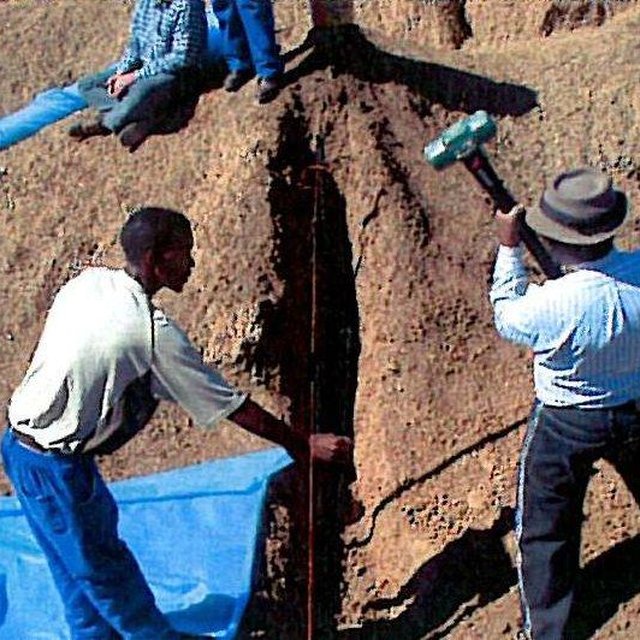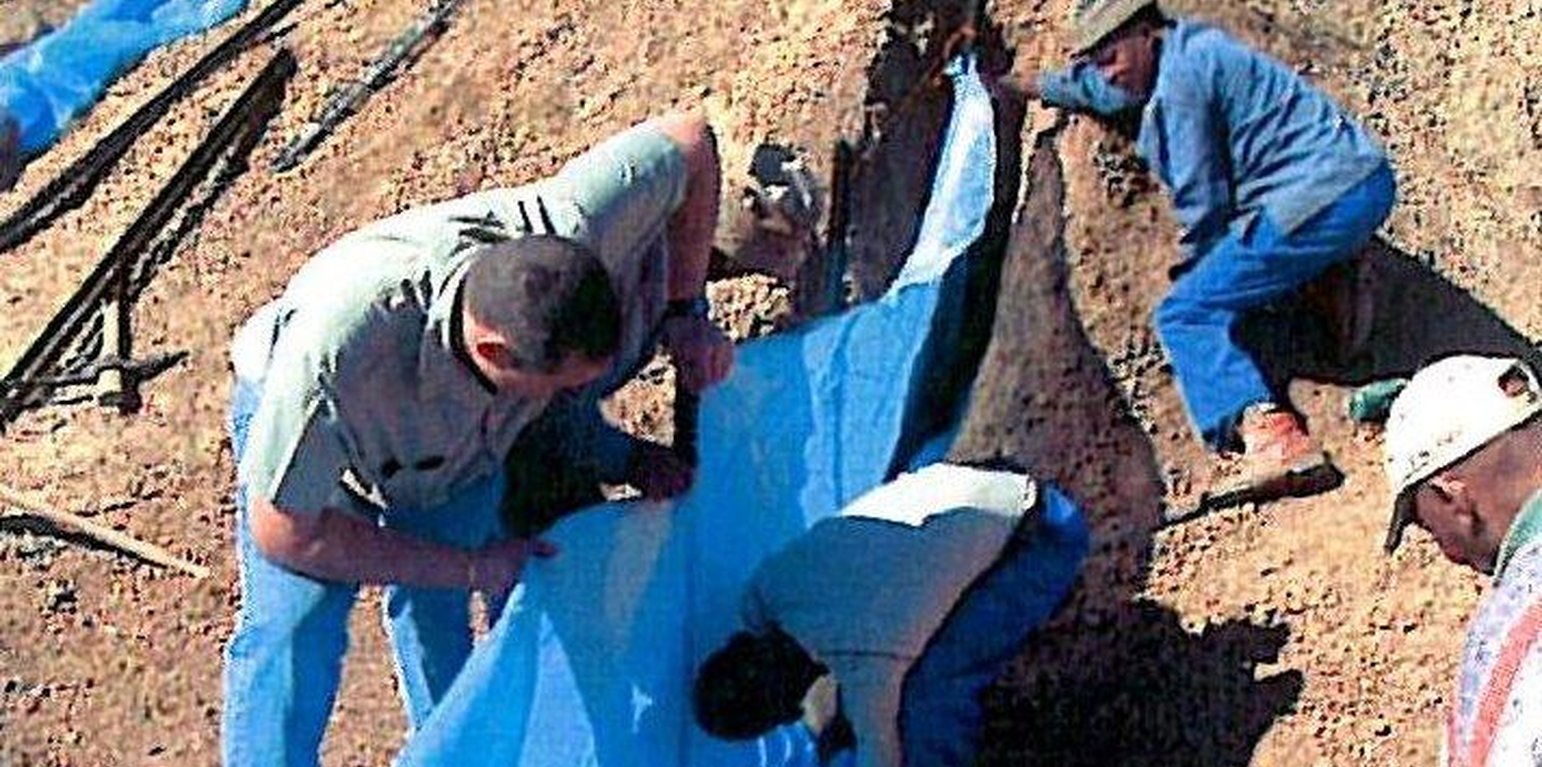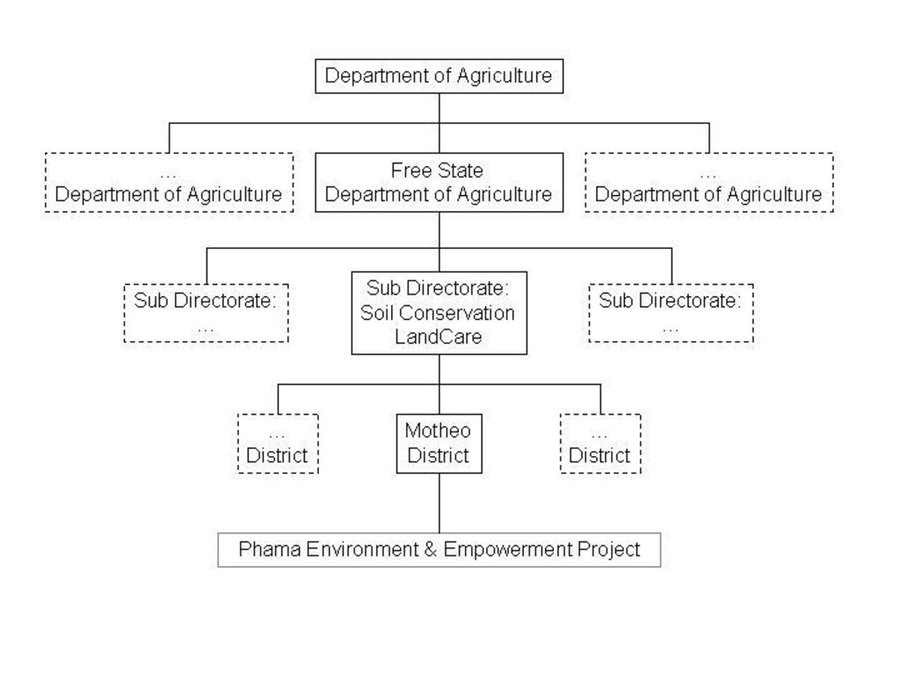Alternative and cost effective methods to control soil erosion
(ЮАР)
Описание
Alternative and cost effective methods to control soil erosion
Aims / objectives: Research alternative, cost effective measures to control soil erosion Training of potentail contractor to errect soil conservation structures (Black Economic Empowerment) Wider acceptance and adoption of techniques by neighbouring communities
Methods: On-site research Literature research Needs analysis Trial and error Awareness ampaigns and information days Job creation to build structures
Stages of implementation: Control invader plants Literature research Design small structures Construction of erosion structures and stock watering Research on run-off trials Data analysis Information sharing
Role of stakeholders: Construction of small structures, controll invader plans, construction of stock watering
Местоположение
![]()
Местоположение: Ladybrandt, South Africa / Free State, ЮАР
Географическая привязка выбранных участков
Дата ввода в действие: 2006
Дата завершения: 2009
Тип Подхода
-
традиционная/ местная система землепользования, используемая коренным населением
-
недавняя местная инициатива/ инновация
-
в рамках проекта/ программы

Soil erosion control

Soil erosion control
Цели подхода и благоприятные условия для его реализации
Главные цели/ задачи Подхода
The Approach focused mainly on SLM with other activities (Control invader and alien plants)
Research alternative, cost effective measures to control soil erosion Training of potentail contractor to errect soil conservation structures (Black Economic Empowerment) Wider acceptance and adoption of techniques by neighbouring communities
The SLM Approach addressed the following problems: Soil erosion Lost of grazing due to invader and alien plants Over grazing Lack of stock / grazing management Lack of knowledge
Условия, содействующие применению Технологии/ Технологий в рамках Подхода
Условия, затрудняющие применение Технологии/ Технологий в рамках Подхода
-
Наличие/ доступность финансовых ресурсов и услуг: Community has limited financial resource for conservation
Treatment through the SLM Approach: Project will provide funding for implementation of structures
-
Нормативно-правовая база (землевладение, права на земле- и водопользование): The existing land ownership, land use rights / water rights moderately hindered the approach implementation Stock owners association rules was too rigid and land users are not owners (communage) - no private ownership. Members of cattle association differ.
-
Осведомленность в области УЗП, доступность технической поддержки: Community does not have technical know-how to design small structures
Treatment through the SLM Approach: Project provides technical inpust
-
Другие: Knowledge: Little knowledge about cost-effective measures to control soil erosion
Treatment through the SLM Approach: Project will provide funding for implementation of structures
Участие и распределение ролей заинтересованных сторон
Заинтересованные стороны, участвующие в реализации Подхода, и их роли
| Какие заинтересованные стороны/ организации-исполнители участвовали в реализации Подхода? |
Перечислите заинтересованные стороны |
Опишите роли заинтересованных сторон |
| местные землепользователи/ местные сообщества |
Stock owners, contractors and community members |
Men will do more physical work like building rock structures or fitting of rock gabions |
| эксперты по УЗП/ сельскому хозяйству |
|
|
| государственные власти (отвечающие за планирование или принятие решений) |
Provincial Department of Agriculture technical officials |
|
| международные организации |
|
|
Участие местных землепользователей/ местных сообществ на разных стадиях реализации Подхода
нет
пассивное
внешняя поддержка
интерактивное
самоорганизация
Схема реализации Подхода
Organogram QA RSA 072
Принятие решений по выбору Технологии УЗП
Решения принимались
-
исключительно землепользователи (по собственной инициативе)
-
в основном землепользователи при поддержке специалистов по УЗП
-
все участники как часть процесса совместных действий
-
преимущественно специалисты по УЗП после консультаций с землепользователями
-
исключительно специалисты по УЗП
-
политики/ руководители
Принятие решений было основано на
-
анализ подробно описанного опыта и знаний по УЗП (принятие решений на основе подтвержденных фактов)
-
результаты исследований
-
личный опыт и мнения (незадокументированные)
Техническая поддержка, повышение компетенций и управление знаниями
Следующие мероприятия или работы являлись частью Подхода
-
Повышение компетенций/ обучение
-
Консультационные услуги
-
Институциональная (организационная) поддержка
-
Мониторинг и оценка
-
Научные исследования
Повышение компетенций/ обучение
Обучение было предоставлено следующим заинтересованным лицам
-
землепользователи
-
местный персонал/консультанты
-
land user
Тип обучения
-
в ходе работы
-
обмен опытом между фермерами
-
опытные участки
-
общие собрания
-
курсы
Рассматриваемые темы
Construction of SWC structures and training on veld management. Control of invader plants.
Консультационные услуги
Консультационные услуги были предоставлены
-
на полях землепользователей
-
в постоянно функционирующих центрах
Name of method used for advisory service: Cost effective erosion control and veld management; Key elements: Awareness, Meetings formal and informal, Farm visits and participatory approaches
Advisory service is quite adequate to ensure the continuation of land conservation activities; Empowered through project to continue with SWC activities
Мониторинг и оценка
technical aspects were regular monitored through measurements; indicators: Functionaing (effectiveness) of structures
socio-cultural aspects were ad hoc monitored through observations; indicators: Adoption of technology
area treated aspects were regular monitored through measurements; indicators: Area treatede / conserved
no. of land users involved aspects were regular monitored through measurements; indicators: No. of community actively involved
management of Approach aspects were regular monitored through measurements; indicators: Maintenance and acceptance
There were few changes in the Approach as a result of monitoring and evaluation: Redesign of small structures and different application of materials
Научные исследования
Научные исследования проводились по следующим темам
-
социология
-
экономика / маркетинг
-
экология
-
технология
Run-off trials and participatory approaches for community participation
Research was carried out on-farm
Финансирование и внешняя материальная поддержка
Годовой бюджет мероприятий по УЗП в долларах США
-
< 2000
-
2000-10000
-
10000-100000
-
100 000-1 000 000
-
> 1 000 000
Precise annual budget: н/п
Approach costs were met by the following donors: government (Agricultural Research Council): 80.0%; national non-government: 15.0%; local community / land user(s): 5.0%
Землепользователям были оказаны/предоставлены следующие услуги или меры стимулирования
-
Финансирование и внешняя материальная поддержка, предоставляемая землепользователям
-
Субсидии на отдельные затраты
-
Кредитование
-
Другие методы или инструменты стимулирования
Финансовая/ материальная поддержка, предоставленная землепользователям
профинансированы частично
профинансированы полностью
оборудование: техника: инвентарь/ инструменты
сельскохозяйственные: семена
сельскохозяйственные: семена: удобрения
Трудозатраты, вложенные землепользователями были
-
добровольный
-
в обмен на продукты
-
за денежное вознаграждение
-
в обмен на другие материальные ресурсы
Анализ влияния и заключительные положения
Влияние Подхода
Нет
Да, немного
Да, умеренно
Да, существенно
Сумел ли Подход помочь землепользователям внедрить и поддерживать технологии УЗП?
Use of silt fences and soil boxes adapted by land users
Сумел ли Подход разрешить правовые проблемы землевладения/ землепользования, препятствующие использованию технологий УЗП?
Improve general awareness and commitment of cattle owners
The problem is unlikely to be overcome in the near future. Too many people - too much pressure on the land and unwillingness of local authorities to get involved.
Did other land users / projects adopt the Approach?
Commercial farmers who visited project adopted and implemented some of the SWC methods deomnstrated / researched in projects.
Основные причины, побуждающие землепользователей внедрять УЗП
Долгосрочная устойчивость мероприятий в рамках Подхода
Могут ли землепользователи самостоятельно (без внешней поддержки) продолжать применение того, что было реализовано в рамках Подхода?
Заключительные положения и извлечённые уроки
Сильные стороны: по мнению землепользователей
-
Temporary job creation (How to sustain/ enhance this strength: Not sustainable if there are no follow up projects)
-
Improved natural resource condition (How to sustain/ enhance this strength: Maintain structures / control invasive plants / implement grazing system)
-
Contractor empowered with unique SWC methods - niche market (How to sustain/ enhance this strength: Continue empowerment with training and informatin sharing. He has to advertise his services.)
Сильные стороны: по мнению составителя или ответственных специалистов
-
Empowerment of community with knowledge and skills (How to sustain/ enhance this strength: Ensure the adaption and implementation of structures and maintenance of current structures)
-
Empowerment of contractor (How to sustain/ enhance this strength: Follow up projects and work for private sector)
-
Holistic approach towards environmental problems (How to sustain/ enhance this strength: systems approach deal with real causes of degradation. More partnerships and more stakholders involved.)
-
Cost effective methods to control soil conservation (How to sustain/ enhance this strength: More on-site research andawareness of test method technologies and approaches.)
-
Alien plant control (How to sustain/ enhance this strength: Follow up and more research monitoring and evaluation)
-
Improved veld management (How to sustain/ enhance this strength: Monitoring and evaluation)
Слабые стороны/ недостатки/ риски: по мнению землепользователейвозможные пути преодоления
-
No ownership of land (land tennure - commonage)
Review use of commonages - need new policy
-
Low educational levels - difficalt to train, learn new technologies
Continue education, training and awareness
-
Contractor needs administrative empowerment
Capacity building
Слабые стороны/ недостатки/ риски: по мнению составителя или ответственных специалистоввозможные пути преодоления
-
Lack of local expertise in SWC structures / small structures
Continue with researh and information shareing at national / international level.
-
Capacity on project management side
More and better trained project managers.
-
Financial support: Huge problem - small budget
Convince national donors about extent and degree of degradation problems. Look for private donors.
-
Politics exclude commercial farmers - project coud have bigger impact
Decision for restoration and conservation must be based on ecological needs and not political agendas.
Справочные материалы
Продолжительность применения Технологии: 21 апреля 2009 г.
Последнее обновление: 18 июня 2017 г.
Ответственные специалисты
-
Christiann Smith (smith@agric.fs.gov.za) - Специалист по УЗП
Полное описание в базе данных ВОКАТ
Документирование осуществлялось при участии






